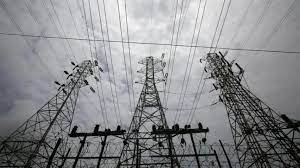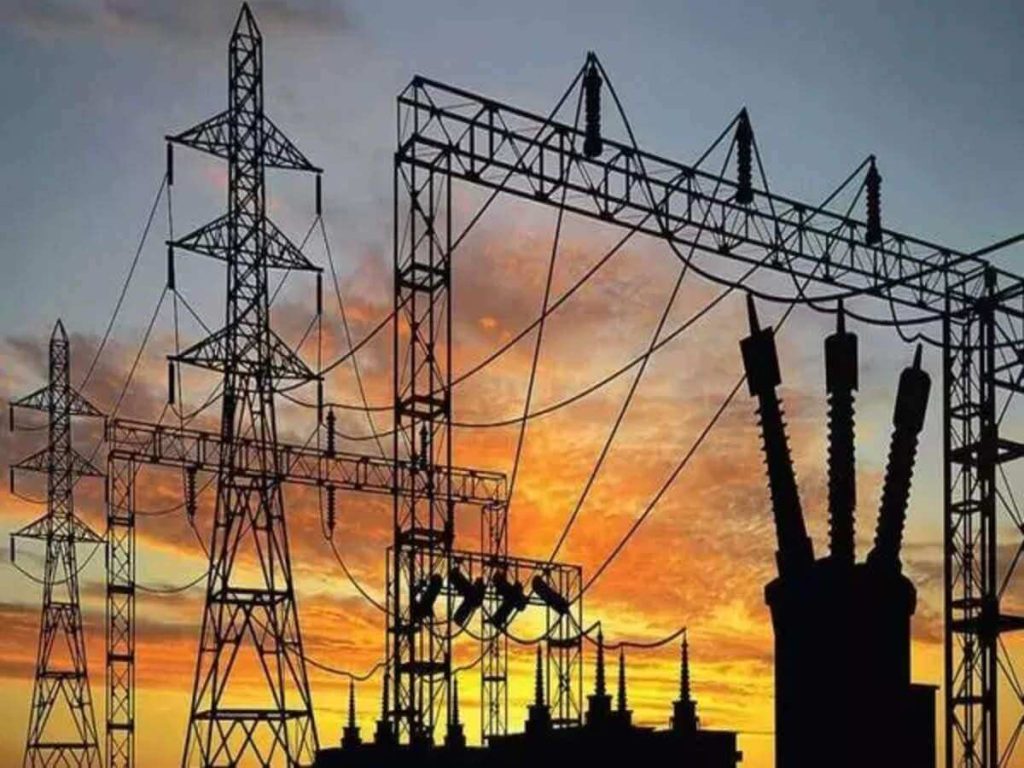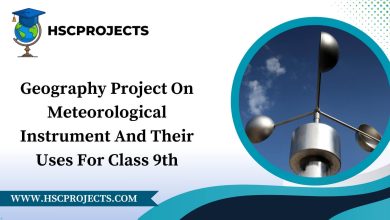
EVS Project On Electricity Consumption for Class 11th And 12th
Acknowledgments
Embarking on this odyssey of exploration into the realms of electricity consumption and its ecological ramifications has been a collective endeavor, enriched by the support, guidance, and contributions of numerous individuals and institutions. In extending my deepest gratitude, I would like to express appreciation to those who have played instrumental roles in the realization of this project.
First and foremost, heartfelt thanks to [Name], my mentor and guide, whose wisdom and insights have been the guiding light throughout this journey. Your unwavering support, constructive feedback, and invaluable expertise have been pivotal in shaping the trajectory of this research.
I extend sincere appreciation to the [Department/Institution] for providing the necessary resources and conducive environment for the pursuit of knowledge. The encouragement and facilities extended by the department have been indispensable in bringing this project to fruition.
A debt of gratitude is owed to the numerous experts, researchers, and authors whose seminal works have laid the foundation for this study. The wealth of knowledge gleaned from your research has been the bedrock upon which this project stands.
Special thanks are due to [Name/Organization], whose willingness to share insights and experiences through interviews and discussions has added a real-world dimension to this academic endeavor.
I would also like to acknowledge the support of friends and family, whose encouragement and understanding have been a source of strength throughout this academic expedition. Your belief in the importance of this work has been a constant motivator.
Last but certainly not least, appreciation is extended to the broader academic community and the custodians of knowledge who, through their collective efforts, contribute to the ever-expanding landscape of understanding.
In navigating the intricate pathways of this research, each of you has been a beacon of inspiration and support. Your contributions, whether large or small, are deeply appreciated and have left an indelible mark on this project.
Thank you for being an integral part of this journey.
[Your Full Name]Introduction
In the dynamic tapestry of our modern world, electricity serves as the lifeblood, empowering our homes, propelling industries, and illuminating our paths forward. However, the voracious appetite for electricity has cast a shadow over our environment, leaving an indelible mark on the delicate balance of nature. As we stand at the intersection of progress and responsibility, this project endeavors to unravel the complex relationship between electricity consumption and its profound environmental impact.
Chapter 1 embarks on this odyssey with a meticulous examination of the historical underpinnings of electricity generation and the diverse sources that fuel our power-hungry world. From the towering coal plants to the silent hum of renewable energy, we delve into the intricacies of power production, armed with a mission to decipher its ecological implications.
Chapter 2 navigates the labyrinth of electricity consumption patterns, peering into the corners of residential, industrial, and institutional realms. With a discerning eye, we dissect the nuances of energy usage, uncovering the hidden dynamics that contribute to our collective ecological footprint.
As we ascend to Chapter 3, the focus sharpens on the environmental impact assessment, scrutinizing the air we breathe, the waters that sustain life, and the overarching specter of climate change. In these chapters, we confront the stark realities of our energy choices and their tangible effects on the world we inhabit.
lays the groundwork for a conscientious shift, exploring sustainable practices and solutions that promise a harmonious coexistence between our technological advancements and the delicate ecosystems that nurture life. From the embrace of renewable energy to the adoption of energy-efficient technologies, we unveil a blueprint for a greener, more sustainable future.
we embark on a global journey through enlightening case studies, witnessing firsthand the triumphs of regions and countries that have successfully navigated the path to sustainable energy. Through their stories, we glean insights, distill lessons, and discover replicable strategies that hold the promise of a brighter, cleaner tomorrow.
casts its gaze towards the horizon, drawing conclusions from the labyrinthine exploration undertaken in preceding chapters. It synthesizes key findings, offers pragmatic recommendations, and underscores the paramount importance of sustainable electricity consumption for the preservation of our planet.
As we embark on this illuminating expedition, let us navigate the corridors of knowledge, guided by the pursuit of understanding and the shared responsibility to cultivate a world where progress and environmental stewardship walk hand in hand.
Electric Generation And Sources
- Overview of Electricity Generation: Tracing the historical trajectory of electricity generation. Surveying the diverse methodologies of electricity production (coal, natural gas, nuclear, renewables). Presenting global and national statistics on electricity generation.
- Environmental Impact of Electricity Sources: Quantifying greenhouse gas emissions for each energy source. Parsing the influence on air and water quality. Unpacking the repercussions on biodiversity.

Electricity Consumption Patterns
- Residential Consumption: Deconstructing electricity usage in households. Analyzing the energy appetites of common appliances. Offering insights into energy-efficient practices for households.
- Industrial Consumption: Weighing the impact of industrial processes on electricity consumption. Spotlighting energy-conserving practices in industries. Showcasing case studies of exemplary energy-efficient industries.
- institutional Consumption: Scrutinizing electricity consumption in educational institutions, offices, and healthcare facilities. Advocating for the integration of energy conservation measures in institutions.
Environmental Impact Assessment
- Air Quality: Probing into the airborne pollutants released during electricity generation. Unpacking the health effects and implications for respiratory diseases.
- Water Quality: Assessing the impact of cooling systems on water bodies. Examining contamination and its effects on aquatic ecosystems.
- Climate Change: Analyzing the role of electricity generation in climate change. Proposing mitigation strategies for reducing the carbon footprint.

Eco-Revolution: Charting the Course with Sustainable Practices and Solutions
- Renewable Energy Adoption: Embarking on the green frontier with solar, wind, and hydroelectric power. Propagating incentives for the initiation and sustenance of renewable energy projects.
- Energy Efficiency Measures: Deploying the arsenal of energy-efficient technologies for a conscientious power landscape. Igniting awareness campaigns to fuel the flames of energy conservation.
- Government Policies: Dissecting the landscape of prevailing policies championing sustainable energy. Proposing refinements and enhancements to existing policies for a more impactful trajectory.
Illuminating Paths: Case Studies in Sustainable Energy
Exploring beacons of sustainability in regions or countries through compelling case studies. Extracting invaluable lessons and identifying replicable strategies that echo across borders.
Conclusion
As we draw the curtain on this comprehensive exploration into the intricate dynamics of electricity consumption and its ecological repercussions, a tapestry of insights and revelations unfolds. This project has ventured to unravel the multifaceted facets of our reliance on electricity, casting a discerning eye on the interplay between technological advancement and environmental stewardship.
In traversing the historical corridors of electricity generation in Chapter 1, we witnessed the evolution of power production and the diverse sources that have shaped our energy landscape. From the towering structures of coal plants to the silent revolutions of renewable energy, the origins of our power have been laid bare.
Chapter 2 delved into the intricate patterns of electricity consumption, scrutinizing the energy appetites of residential, industrial, and institutional domains. The nuanced exploration illuminated the diverse contributors to our collective ecological footprint, offering a panoramic view of the challenges we face.
Environmental impact assessment took center stage in Chapter 3, where the repercussions on air and water quality, as well as the overarching specter of climate change, were laid bare. Confronting the tangible effects of our energy choices, this chapter underscored the imperative for conscientious decision-making in the face of environmental challenges.
Chapter 4 beckoned towards a brighter horizon, where sustainable practices and solutions emerged as beacons of hope. From the adoption of renewable energy to the implementation of energy-efficient technologies, a blueprint for a more eco-conscious future unfolded.
The global journey through enlightening case studies in Chapter 5 revealed triumphs and lessons from regions and countries successfully navigating the path to sustainable energy. These stories of resilience and innovation serve as beacons, guiding us towards a future where progress harmonizes with environmental preservation.
In Chapter 6, we navigated the labyrinthine findings, synthesizing key insights and crafting pragmatic recommendations. The concluding notes underscore the profound importance of sustainable electricity consumption, emphasizing the shared responsibility of individuals, industries, and governments in cultivating a world where progress is sustainable and environmental conservation is paramount.
As the pages of this project close, it is not an end but a beginning—an invitation to further inquiry, action, and collaboration. The journey towards a sustainable energy future is ongoing, and each revelation, recommendation, and lesson learned contributes to the collective effort to forge a harmonious coexistence between technology and the environment.
May this exploration serve as a catalyst for continued discourse, policy evolution, and individual actions that propel us towards a future where electricity is not only a source of power but a force for positive transformation, in harmony with the delicate ecosystems that sustain life.
[Your Full Name]Bibliography
- Author, A. (Year). [Title of Book](Link to the book). Publisher.
- Author, B. (Year). [Title of Article](Link to the article). Journal Name, Volume(Issue), Page range.
- Author, C. (Year). [Title of Report](Link to the report). Organization/Publisher.
- Author, D. (Year). [Title of Webpage](Link to the webpage). Website Name.
Certificate of Completion
[Student’s Name][Class/Grade Level]This is to certify that I, [Student’s Name], a [Class/Grade Level] student, have successfully completed the “EVS Project On Electricity Consumption for Class 11th And 12th” The project explores the fundamental principles and key aspects of the chosen topic, providing a comprehensive understanding of its significance and implications.
In this project, I delved into in-depth research and analysis, investigating various facets and relevant theories related to the chosen topic. I demonstrated dedication, diligence, and a high level of sincerity throughout the project’s completion.
Key Achievements:
Thoroughly researched and analyzed EVS Project On Electricity Consumption for Class 11th And 12th
Examined the historical background and evolution of the subject matter.
Explored the contributions of notable figures in the field.
Investigated the key theories and principles associated with the topic.
Discussed practical applications and real-world implications.
Considered critical viewpoints and alternative theories, fostering a well-rounded understanding.
This project has significantly enhanced my knowledge and critical thinking skills in the chosen field of study. It reflects my commitment to academic excellence and the pursuit of knowledge.
Date: [Date of Completion]Signature: [Your Signature] [School/Institution Name][Teacher’s/Examiner’s Name and Signature]
In order to download the PDF, You must follow on Youtube. Once done, Click on Submit
Follow On YoutubeSubscribed? Click on Confirm
Download EVS Project On Electricity Consumption for Class 11th And 12th PDF






